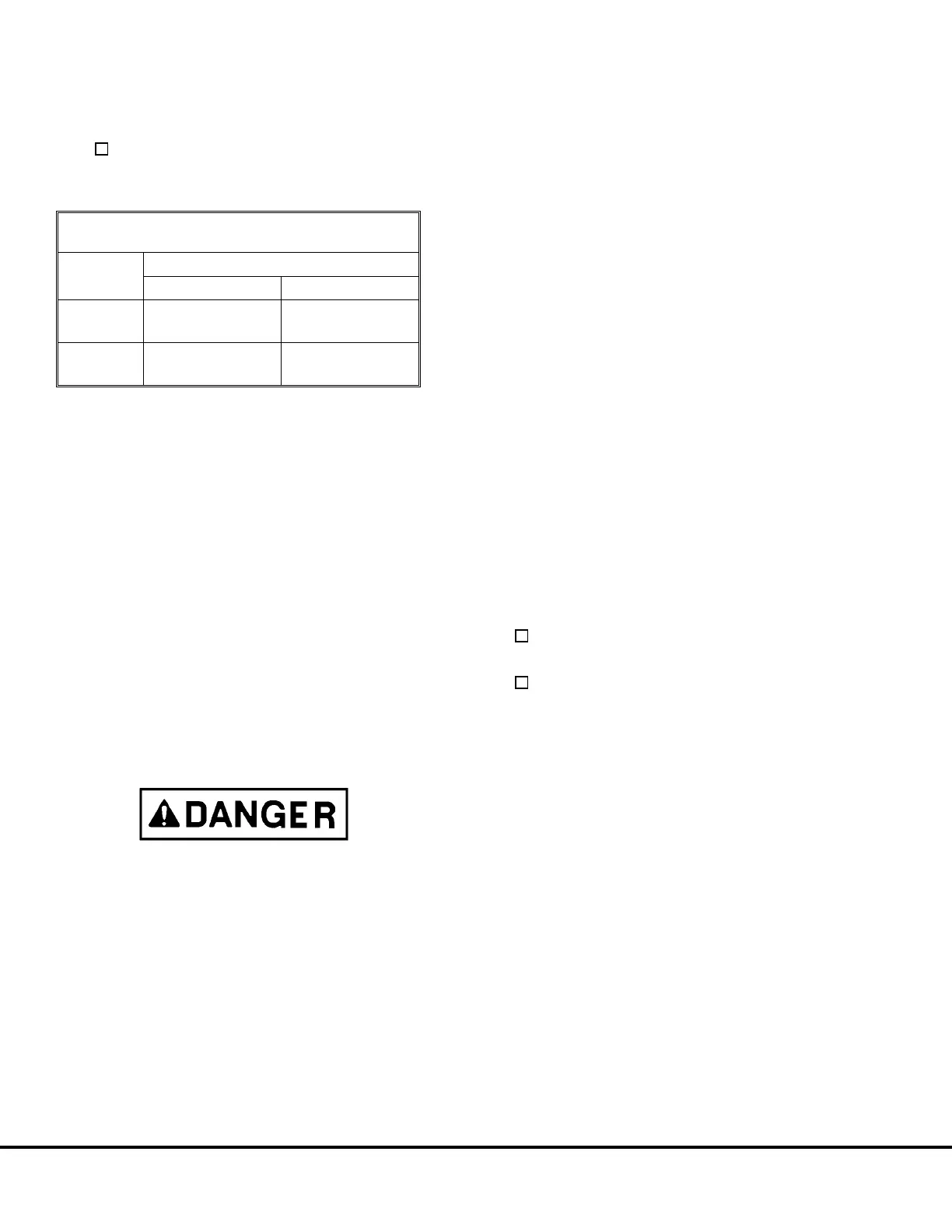13. Slowly depress plunger to obtain pressure shown
in Table I on the “B1” pressure gauge:
Adjust screw plug in bottom port of differential
pressure switch counterclockwise until
switch contacts just close.
Table I - Differential Pressure Switch
Adjustment
Spring
Color
Pressure - Switch Contacts Closing
“B1” Valve Spool “B2” Valve Spool
Red
300 ±30 psi
(2 068 ±207 kPa)
300 ±30 psi
(2 068 ±207 kPa)
Green
600 ±50 psi
(4 137 ±345 kPa)
600 ±50 psi
(4 137 ±345 kPa)
14. Release plunger and depress again while observ-
ing “B1” gauge and ohmmeter to verify switch
contacts close at the pressure in Table I.
If not, repeat step 13.
15. Insert pry bar under pivot pin to actuate the “B2”
section of valve.
16. Slowly depress plunger while observing ohmme-
ter; switch contacts should close at the pressure
in Table I on the “B2” gauge. A slight adjustment
may be necessary.
17. Slowly depress both plungers equally from mini-
mum to maximum application pressure. Switch
contacts must remain open.
18. Install plug (6) and tighten to 90 - 100 in. lbs. (10.2
- 11.3 N.m) torque.
19. Shut down the test bench and relieve all hydraulic
pressure from the lines.
Avoid spillage and contamination! Avoid contact
with hot oil if the machine has been operating. The
oil will be at very high pressure.
Hydraulic fluid escaping under pressure can have
sufficient force to enter a person’s body by pene-
trating the skin and cause serious injury and pos-
sibly death if proper medical treatment by a
physician familiar with this injury is not received
immediately.
20. Remove hoses from valve and remove valve from
test stand. Refer to instructions below for pedal
actuator installation prior to final test.
Final Test and Adjustment
The brake pedal actuator must be installed on the
brake valve body prior to final test and adjustment.
Refer to “Installation of Brake Pedal Actuator to Brake
Valve”.
NOTE: The “Final Test and Adjustment” procedure
can also be performed with the brake valve installed in
the truck. To perform final test with brake valve
mounted in the truck, install valve per instructions in
“Installation”. Install 3000 psi (20 682 kPa) gauges at
the “B1” and “B2” diagnostic test connectors in the
brake cabinet. Follow steps 21. - 33. below for final
test.
21. Reinstall brake valve (with actuator pedal at-
tached) on the test stand following steps 2
through 9. under “Test Setup Procedure”.
22. With test stand pump adjusted for 2750 psi
(18,960 kPa) or with engine running and brake
system supply pressure at or above 2750 psi (18,
960 kPa), depress the pedal as quickly as possi-
ble. The pressure on the output circuits must
reach the minimum pressure listed below at port
“B1” and port “B2” within 1.0 second. Measure-
ment of time begins the moment force is applied
to move the pedal.
Rear Brake - “B1”: 2400 ±75 psi
(16,545 ±517 kPa)
Front Brake - “B2” : 2400 ±75 psi
(16,545 ±517 kPa)
23. With “B1” and “B2” plugged into a strip chart
recorder, (if available) check the modulation by
slowly applying pressure until the maximum pres-
sure is reached. Make sure the pressure increase
is smooth and no sticking of the spools is ob-
served. Fully depress the pedal. Pressures must
remain within specification at “B1” and “B2” for
20 seconds.
24. Adjust set screw (21, Figure 3-10) until the set
screw is not touching the actuator cap. Apply
Loctite
®
242 to the adjustment screw prior to
setting the deadband.
25. Set the deadband by placing a 0.010 in (0.254
mm) thick shim at location (9) between the pedal
structure and return stop boss on pivot structure.
26. Adjust the set screw (21) until the set screw is just
touching the cap.
J3-12 Brake Circuit Component Service J03019 1/99
